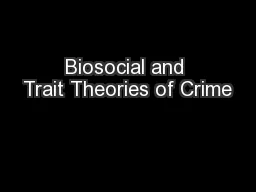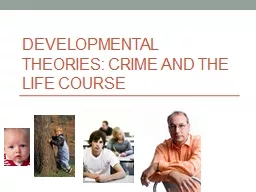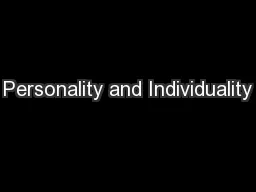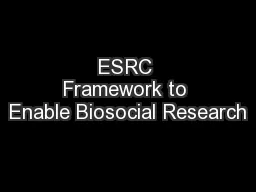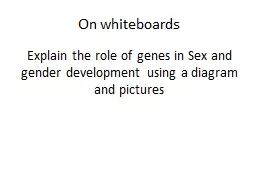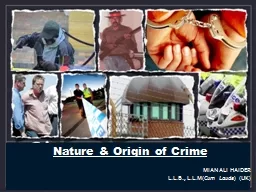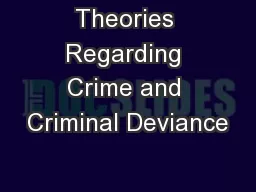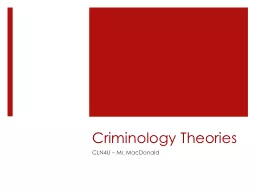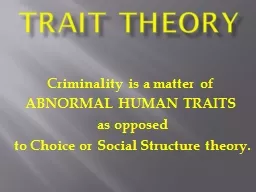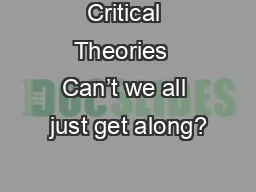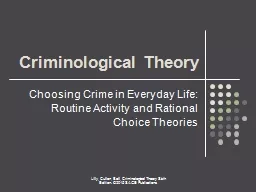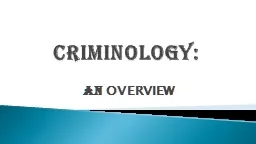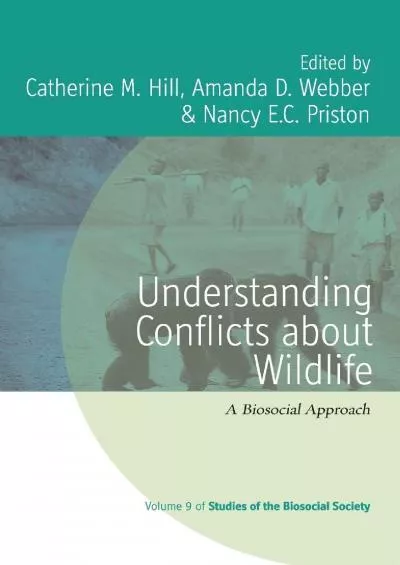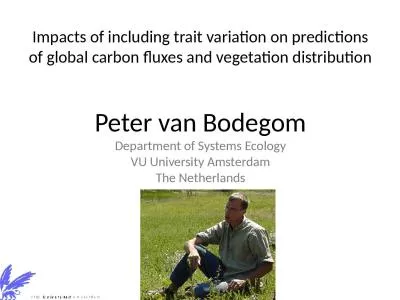PPT-Biosocial and Trait Theories of Crime
Author : alexa-scheidler | Published Date : 2016-03-23
Part II The Impact of Cesare Lombroso Lombrosos perspective was the dominant theory in the early 1900s Argued criminals were less evolved than noncriminals Throwbacks
Presentation Embed Code
Download Presentation
Download Presentation The PPT/PDF document "Biosocial and Trait Theories of Crime" is the property of its rightful owner. Permission is granted to download and print the materials on this website for personal, non-commercial use only, and to display it on your personal computer provided you do not modify the materials and that you retain all copyright notices contained in the materials. By downloading content from our website, you accept the terms of this agreement.
Biosocial and Trait Theories of Crime: Transcript
Download Rules Of Document
"Biosocial and Trait Theories of Crime"The content belongs to its owner. You may download and print it for personal use, without modification, and keep all copyright notices. By downloading, you agree to these terms.
Related Documents

